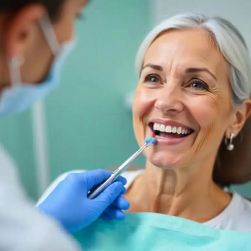What are the Signs of Oral Cancer, and How Can It Be Prevented or Detected Early?
Oral cancer is a serious health issue that affects thousands of Americans every year. It often goes undetected until it reaches an advanced stage due to subtle early symptoms. Understanding the signs and risk factors associated with oral cancer is crucial to preventing or catching it early. Here, we'll explore what oral cancer entails, its common indicators, and how proactive measures can make a significant difference in outcomes.
Understanding Oral Cancer
Oral cancer refers to cancer that develops in any part of the mouth or upper throat. It's a term that encompasses cancers of the lips, tongue, cheeks, floor of the mouth, and hard and soft palates. According to the American Cancer Society, approximately 54,000 people in the United States are diagnosed with oral or oropharyngeal cancer annually. These cancers have a high chance of successful treatment if detected early, making awareness and vigilance vital.
Recognizing the Signs and Symptoms
The first step in early detection is knowing what signs to look for. Oral cancer symptoms can be mistaken for other common mouth issues but when they persist, they need professional evaluation. Key indicators include:
- Persistent mouth sores that don't heal
- A lump or thickening of the cheek
- White or red patches on the gums, tongue, tonsils, or lining of the mouth
- Sore throat or feeling that something is caught in the throat
- Difficulty chewing or swallowing
- Numbness of the tongue or other areas of the mouth
- Change in voice or persistent hoarseness
These symptoms warrant consultation with a dental professional. At Dentistry Toothtruth, we emphasize regular check-ups that can pinpoint such concerns early.
Understanding Risk Factors
Several risk factors increase the likelihood of developing oral cancer. Tobacco use in any form, excessive alcohol consumption, a history of significant sun exposure (specifically for lip cancer), and human papillomavirus (HPV) infection are primary risks. The combination of smoking and drinking excessively greatly magnifies the risk. Additionally, men are twice as likely as women to develop oral cancer, and it frequently occurs in those over 40 years of age.
Awareness of these risk factors can guide lifestyle choices that minimize exposure. For instance, reducing tobacco and alcohol intake, using lip protection, and ensuring regular dental visits are essential actions advised by Dentistry Toothtruth.
Preventive Measures and Early Detection
Preventive strategies and early detection play a critical role in reducing the burden of oral cancer. Regular dental check-ups can detect early changes in the mouth that might indicate cancer. Dentists and hygienists are trained to spot subtle changes in color and texture that may go unnoticed by the untrained eye. Moreover, adopting oral hygiene best practices, reducing alcohol and tobacco use, and maintaining a healthy diet rich in fruits and vegetables contribute to lowering cancer risks.
Employing advanced screening technologies is also part of proactive dental care at Dentistry Toothtruth, ensuring comprehensive evaluations are part of routine visits.
Conclusion: Taking Action for Oral Health
Regular awareness, self-examination, and professional dental visits are pillars of early oral cancer detection. Recognize the signs, understand the risks, and take preventive actions to safeguard your health. At Dentistry Toothtruth, we are committed to providing resources, screenings, and education to empower you in maintaining optimal oral health priorities. Schedule a consultation today at Dentistry Toothtruth to be proactive about your oral health.






